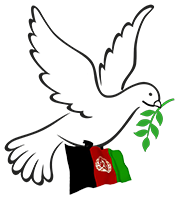The central regions of the country witnessed the highest number of security incidents during these three months, with 263 incidents.
The United Nations’ quarterly report on Afghanistan states that internal disputes exist within the Islamic Emirate, and the number of security incidents has increased by 38% from November 1, 2023, to January 10, 2024, compared to the same period in 2022 and 2023.
The central regions of the country witnessed the highest number of security incidents during these three months, with 263 incidents.
António Guterres, the Secretary-General of the United Nations, addressed the humanitarian, economic, security crises, and the fight against drugs in Afghanistan in the report.
The findings of this report indicate that since the return of the Islamic Emirate, the current Afghan authorities have had internal disagreements on fundamental matters such as governance, and there has been no progress in making institutions and decision-making processes inclusive.
Regarding human rights issues, the report states that the rights of women and girls in all areas of life in Afghanistan have been restricted. The arrest of women for not observing the hijab is mentioned in the report.
The report adds, “Restrictions against women and girls remain in place, and in some areas of Afghanistan, the enforcement of these restrictions has become more difficult.”
However, António Guterres, the Secretary-General of the United Nations, has praised the reduction in opium cultivation and drug production in Afghanistan in the report.
Regarding drugs, the report reads, “Following the ban on cultivation and production of drugs by the current Afghan authorities, opium cultivation in Afghanistan has decreased by 95%, leading to a significant and sustained increase in the price of opium. The United Nations Office on Drugs and Crime estimates that as a result of this ban, opium farmers have lost half of their total income.”
“When the United Nations publishes a report on the situation in Afghanistan, it should mention the deficiencies, achievements, and progress, i.e., both the positives and negatives,” said Sayed Akbar Sial Wardak, a political analyst.
“Security threats and problems have existed and will exist; not addressing these issues at the right time is a problem,” said Idrees Zazai, another political analyst.
So far, the Islamic Emirate has not responded to this report; however, it has always stated that human rights in the country are ensured based on Islamic laws, and fighting drugs as well as ensuring security across the country are among the achievements of the Islamic Emirate.
 Afghanistan Peace Campaign
Afghanistan Peace Campaign

